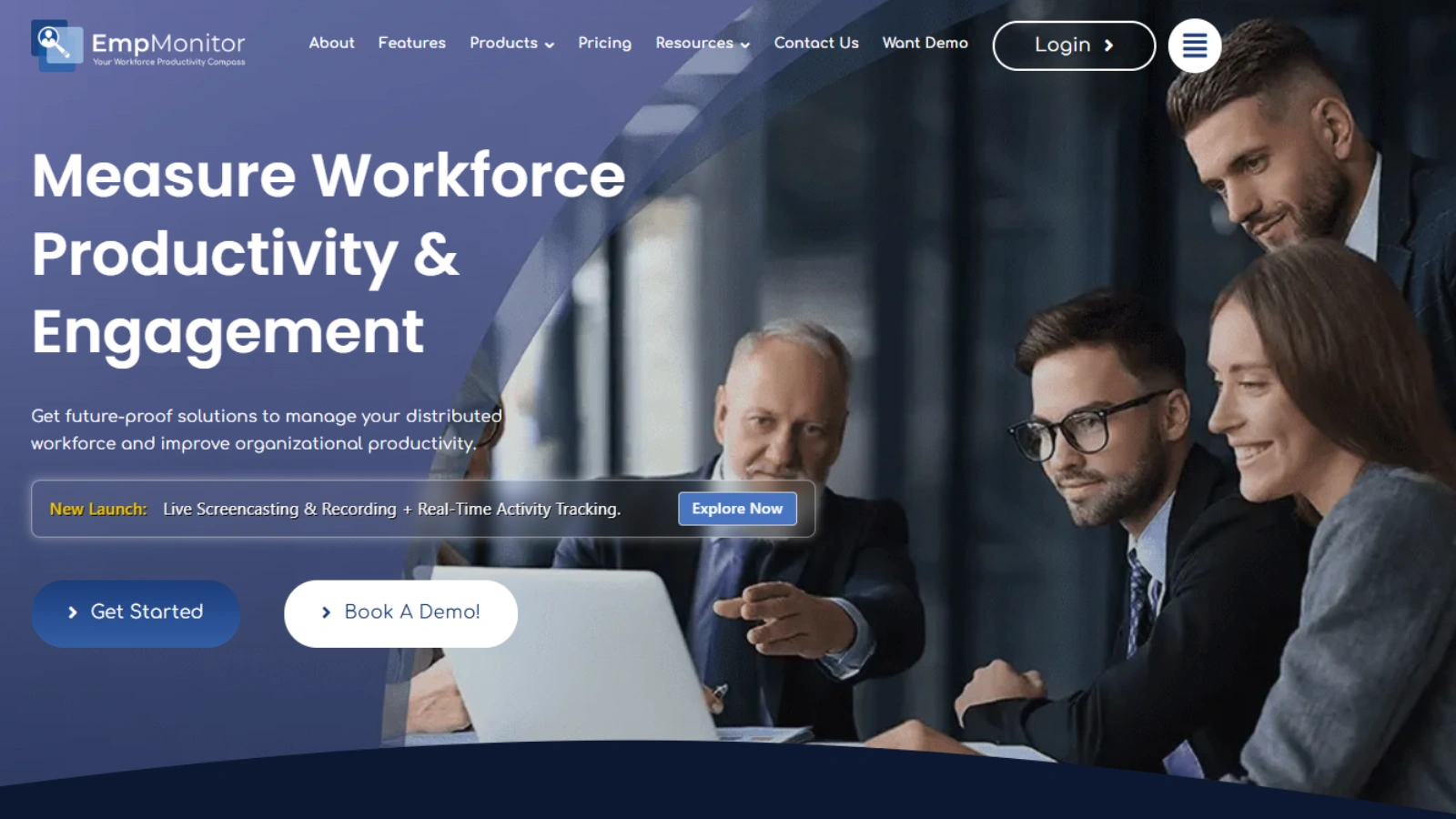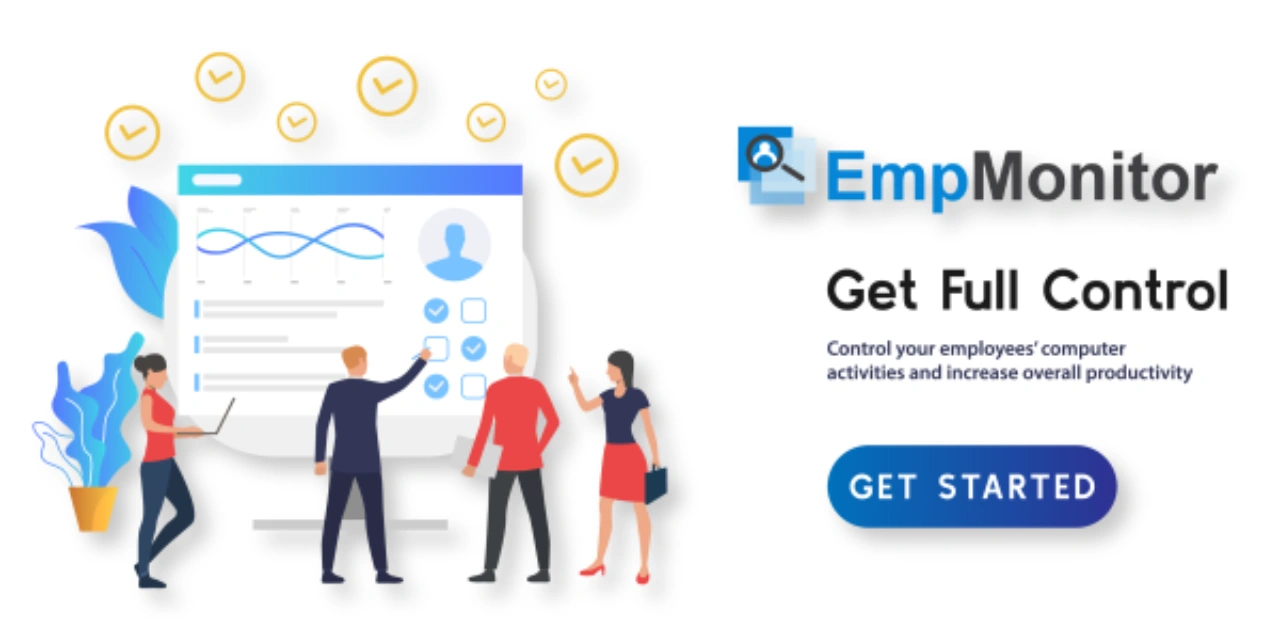Why do some teams seem to get everything done effortlessly while others struggle with the same tasks? The answer often comes down to labor productivity, a key factor that quietly drives the success (or failure) of any business.
Labor productivity isn’t just a buzzword tossed around in meetings. It’s about how efficiently people turn their time and energy into real results. And in a world where resources are limited and expectations keep rising, this matters more than ever.
Whether you’re running a business, leading a department, or just trying to make sense of your daily workload, knowing how productive your team is can make a massive difference. It’s not about squeezing more hours out of people; it’s about making every hour count.
- In this blog, we’ll break it down:
- What labor productivity actually means?
- How to measure it in real, practical terms?
- And why it’s one of the smartest ways to boost performance without overworking your team.
So, let’s get started!
Hit ‘Play’ Button & Tune Into The Blog!
What is Labor Productivity?
At its core, it refers to the amount of economic output generated per hour of labor input. In simpler terms, it tells us how much value is being created for every hour someone works. It is a macroeconomic metric that provides a bird’s-eye view of how effectively a country or organization is utilizing its labor force.
This metric often gets conflated with individual performance, but there’s a crucial distinction: it reflects overall economic or organizational output, not the productivity of a single worker. Still, understanding it can reveal deep insights into economic health, potential growth, and even the standard of living.
Why Does Labor Productivity Matter?
The implications of productivity stretch far beyond the walls of offices and factories. A consistent rise in it leads to:
- Economic Growth: When more output is generated with the same amount of labor, economies grow without necessarily increasing working hours.
- Higher Wages and Living Standards: As businesses become more efficient, they can afford to pay higher wages and invest in better infrastructure.
- Price Stability: Increased productivity helps keep inflation in check by balancing supply and demand.
- Competitiveness: On a global scale, nations with higher productivity have a competitive edge in trade and innovation.
Simply put, improved productivity is one of the strongest engines of long-term prosperity.
How To Calculate Labor Productivity?
So, how do you calculate productivity? Let’s break it down.
The labor productivity formula is:
L.P. = Total Output / Total Labor Hours
Here, output typically refers to real Gross Domestic Product (GDP)—adjusted for inflation to reflect real value. Labor hours indicate the total number of hours worked by all workers.
For example:
Let’s say a country generates a real GDP of $10 trillion in a year, and its labor force clocks in 300 billion hours. Using the productivity formula, we get:
$10 trillion / 300 billion = $33.33 per hour
This means that for every hour worked, $33.33 worth of goods or services were produced.
Knowing how to calculate productivity gives you a simple yet powerful way to track efficiency and forecast economic progress.
What Affects Labor Productivity?
Now that we’ve tackled the “what” and “how,” let’s look at the “why”, why productivity improves or declines.
There are three primary drivers:
1. Investment in Physical Capital
This includes tools, machinery, infrastructure, and technology. When workers have better equipment, they work faster and produce higher-quality results.
2. Technological Progress
Automation, artificial intelligence, and digitization revolutionize how work gets done. A modern assembly line or cloud software can exponentially boost output with minimal labor increases.
3. Human Capital Development
Education, skill development, and training play a critical role. The more knowledgeable and skilled the workforce, the more efficiently they operate.
Together, these factors combine to paint a complete picture of what is labor productivity and what influences it on a macro level.
How Does Division of Labor Increase Productivity?
The age-old concept of division of labor—breaking down work into specialized tasks—plays a vital role in productivity.
Here’s how it boosts labor productivity:
- Efficiency through specialization: Workers master specific tasks, reducing time spent learning or shifting roles.
- Reduced transition time: Focusing on one activity avoids the delays that come with switching between varied tasks.
- Innovation opportunity: When tasks are repetitive, there’s room to innovate and automate processes.
- Improved quality: With focus comes mastery, and with mastery comes superior quality.
So, the next time you ask, “how does division of labor increase productivity?”—think assembly lines, software teams, or even restaurant kitchens. Specialization leads to speed, quality, and ultimately, higher productivity.
The Importance of Measuring Labor Productivity
Why go through all the trouble of measuring this metric?
Because measuring labor productivity isn’t just an academic exercise. It has real-world consequences. Here’s why businesses, governments, and economists monitor it so closely:
1. Benchmarking Performance
It helps organizations compare performance across departments, industries, or countries. Are your workers producing more or less than competitors?
2. Identifying Bottlenecks
Tracking output vs. hours worked can highlight inefficiencies in workflows or systems that need reengineering.
3. Guiding Policy and Investment
Governments use this metric to decide where to invest—whether in infrastructure, education, or healthcare—to stimulate productivity growth.
4. Forecasting Economic Health
Rising productivity often precedes economic expansion. Falling numbers? That could signal stagnation or recession.
Ultimately, productivity reflects not just how hard people work—but how smartly economies function.
Modern Solutions: Leveraging Technology for Productivity Gains
In the digital age, technology plays a transformative role in labor output. Two critical solutions are:
1. Workforce Management Software
Modern businesses rely on workforce management software to streamline schedules, track performance, and optimize staffing. By automating repetitive tasks and reducing administrative burdens, these tools directly contribute to improving productivity.
2. Employee Workforce Monitoring Software
Monitoring tools help leaders understand work patterns, productivity levels, and time allocation. With data-backed insights, they can make informed decisions that enhance employee focus, reduce burnout, and ultimately drive better performance.
For instance, tools like EmpMonitor can identify productivity blockers—whether it’s excessive idle time, unproductive browsing, or inefficient task allocation. By analyzing these patterns, managers can take proactive steps to enhance output without overburdening the team.
EmpMonitor: Your All-in-One Workforce Monitoring Software
In the journey to improve labor productivity, having the right insights at the right time can make all the difference. Traditional methods of supervision and guesswork just don’t cut it anymore—especially with remote and hybrid work becoming the norm.
That’s where EmpMonitor, an advanced employee workforce monitoring software, becomes a game-changer. It helps organizations tap into data-backed decision-making by offering deep visibility into how teams work, where time goes, and where improvements can be made.
Key Features of EmpMonitor:
-
Real-Time Employee Monitoring
Track user activity live to understand how time is spent during work hours, enabling quick interventions and improved accountability.
-
Detailed Productivity Reports
Get a clear breakdown of productive vs. unproductive hours for individuals and teams, helping managers spot performance trends and address bottlenecks.
-
Time Tracking & Timesheets
Automatically record login/logout times and total working hours for accurate performance assessment, payroll accuracy, and compliance needs.
-
Stealth Mode Operation
Monitor activities discreetly without disrupting workflows or affecting morale, ensuring employees stay focused while maintaining trust.
-
Application & Website Usage
Analyze which tools, websites, and platforms are being used and for how long, helping you optimize resource allocation and reduce distractions.
-
Insider Threat Detection
Enhance data security with behavior alerts, unauthorized access detection, and proactive measures to prevent data breaches before they occur.
When managers understand how their workforce operates, they can focus on eliminating bottlenecks, supporting high performers, and helping struggling employees realign. That’s exactly what EmpMonitor enables—with zero guesswork.
By providing transparency, accountability, and real-time feedback, EmpMonitor helps businesses foster a culture of efficiency, trust, and continuous improvement, ultimately boosting overall productivity in measurable ways.
Challenges to Labor Productivity Growth
While we aim for continuous improvement, several roadblocks can stunt productivity:
- Lack of access to modern technology
- Insufficient training and upskilling
- Outdated business processes
- Low employee morale or poor engagement
- Overstaffing or poor role allocation
Addressing these challenges requires strategic investment, agile leadership, and a willingness to embrace change.
Long-Term Strategies to Boost Productivity
A quick software adoption or one-time training won’t cut it. Sustained productivity requires a long-term mindset. Here are advanced strategies that can help:
1. Digital Transformation
Businesses adopting technologies like AI, IoT, and machine learning are witnessing exponential gains. These tools help automate routine tasks, identify bottlenecks, and provide predictive insights—all of which fuel smarter work and better outcomes.
2. Data-Driven Decision-Making
By leveraging real-time data through workforce management software, companies can understand peak productivity hours, project bottlenecks, and individual contributions. These insights pave the way for informed decision-making that boosts efficiency.
3. Cross-Functional Collaboration
Silos kill productivity. Encouraging teams to collaborate across departments—marketing, operations, HR—can lead to shared knowledge, quicker problem-solving, and smoother workflows.
4. Continuous Feedback and Improvement
With the help of employee workforce monitoring software, managers can provide feedback that’s timely and contextual. Pairing this with a culture of open communication ensures constant improvement and growth in labor productivity over time.
Also Read: –
9 Ways To Improve Employee Productivity In The Workplace
13 Different Ways To Calculate Productivity Of Your Workforce
The Global Race for Productivity
Countries across the globe are now treating labor productivity as a national asset.
- Japan and South Korea have invested heavily in automation and education to counteract shrinking labor forces.
- Germany’s Mittelstand model, with its focus on skilled labor and specialized manufacturing, consistently yields high output per worker.
- India, with its booming young population, is at a critical point where investment in skill-building and workforce management software could significantly improve national productivity.
These examples prove that whether you’re managing a factory, a SaaS team, or a national economy, productivity is the currency of modern success.
Encouraging Employee-Led Productivity Growth
Sometimes, the most powerful changes come from within.
Here’s how employees can take charge of their own productivity:
- Skill up regularly. Continuous learning increases not only value but adaptability in a changing economy.
- Use productivity tools mindfully. From time trackers to task managers, smart tools help maintain focus and structure.
- Balance output with wellness. Sustainable productivity requires physical and mental health. Prioritize rest, clarity, and boundaries.
When workers are empowered with the right mindset, supported by workforce management software like EmpMonitor, and guided by clear goals, productivity naturally climbs.
Final Thoughts:
When we ask, “What is labor productivity?”, we’re really asking, “How well are we turning effort into impact?”
This metric serves as a mirror to our economic and organizational efficiency. It’s a reflection of the tools we use, the skills we hone, and the systems we build. As technology advances and workplaces evolve, productivity will remain a critical North Star guiding how we define success, both in the boardroom and in the economy.
If you’re a business leader, start by auditing your workflow. If you’re a policymaker, invest in education, innovation, and infrastructure. If you’re an employee, seek growth, embrace tools, and optimize how you work.
Because in the grand equation of progress, productivity isn’t just a number, it’s a movement toward better work, smarter systems, and brighter futures.
Frequently Asked Questions (FAQs)
Q1: What is labor productivity in simple terms?
It measures the value of output generated per hour worked. It tells us how efficiently labor is being used to create goods or services.
Q2: How do I use the labor productivity formula?
Use this formula: L.P. = Total Output / Total Labor Hours. It gives you a value that shows how much output is generated for every hour worked.
Q3: How does division of labor increase productivity?
It boosts efficiency by allowing workers to specialize in specific tasks. This leads to faster, higher-quality output with reduced training and transition time.
Q4: Can workforce management software help with labor productivity?
Yes. It streamlines scheduling, tracks productivity, and provides insights to optimize workforce deployment—all contributing to better labor output.
Q5: What’s the role of employee workforce monitoring software?
These tools help monitor time use, reduce inefficiencies, and enhance accountability—leading to smarter labor utilization and increased productivity.















